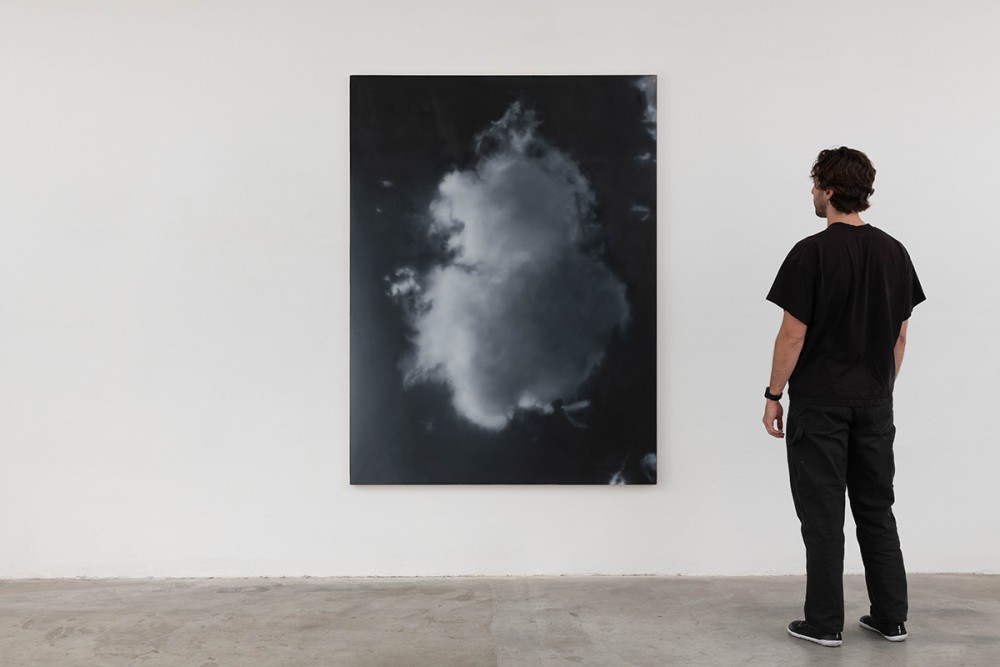
Ian Stanton: Assessments
Ian Stanton makes paintings of singular subjects—uncanny, in situ, or in various states of temporal suspension. Assessments features paintings of clouds moments before their shapes dissolve, elusive figures caught in the act of turning away, and a collection of jewelry under appraisal. Working from an archive of found imagery as well as from his own photographs, Stanton is drawn to subjects that evade immediate legibility, flirt with narrative impulse, and reflect the lack of agency in relation to the act of observation.
Stanton paints and continues to repaint subjects sometimes over the course of several years—a process he likens to recalibration, sequencing and pattern making, tuning, or even stuttering. Within a series of these revisitations, Stanton deploys unexpected shifts of tone, color, clarity, scale, or resolution, each part of a rhizomatic sprawl through infinite moments of observation and the adjacent associative thoughts that occur as a painting unfolds. Establishing systems of visual logic and repeatedly breaking them, Stanton’s paintings embody the fundamentals of improvisation. They embrace time as a strategy to continuously recontextualize memory within the present marked by mood, season, and time of day.
With an intentionally limited palette, Stanton’s paintings are primarily monochrome—sometimes rendered in unadulterated blacks and whites and at other times revealing a full spectrum of chromatic grays supplemented by undertones of warm umbers or cooler hues. Occasional and unpredictable stipples or swarms of reds, yellows, greens, blues, and purples appear—an ever-looming threat of color informed by a lifelong suspicion of color as a signifier of beauty. “I gravitate towards nuances of tonality, subtlety of edge, and delineation,” divulges Stanton. Born colorblind, abrupt color changes interfere with the particular quality of visual stimulation that informs Stanton’s paint application. Animated as he describes the light from a scanner gliding across the curved surfaces of pearls, Stanton is likely to neither assign meaning to the jewelry’s former owner nor to the reason for evaluation—the experiences that matter are ones that can be forgotten and remembered again.*
*Søren Kierkegaard, Either/Or (1943)
Stanton (b. 1989, Hong Kong) received a BA in fine arts and philosophy from the USC in Los Angeles, CA. His work has been exhibited at venues including Actual Size, in lieu, and Human Resources in Los Angeles, CA; Rice University and Johnathan Hopson Gallery in Houston, TX; Darger HQ in Omaha, NE; 99 Suffolk in New York, NY; and Wieden+Kennedy in Tokyo, Japan. Stanton lives and works in Los Angeles, CA.